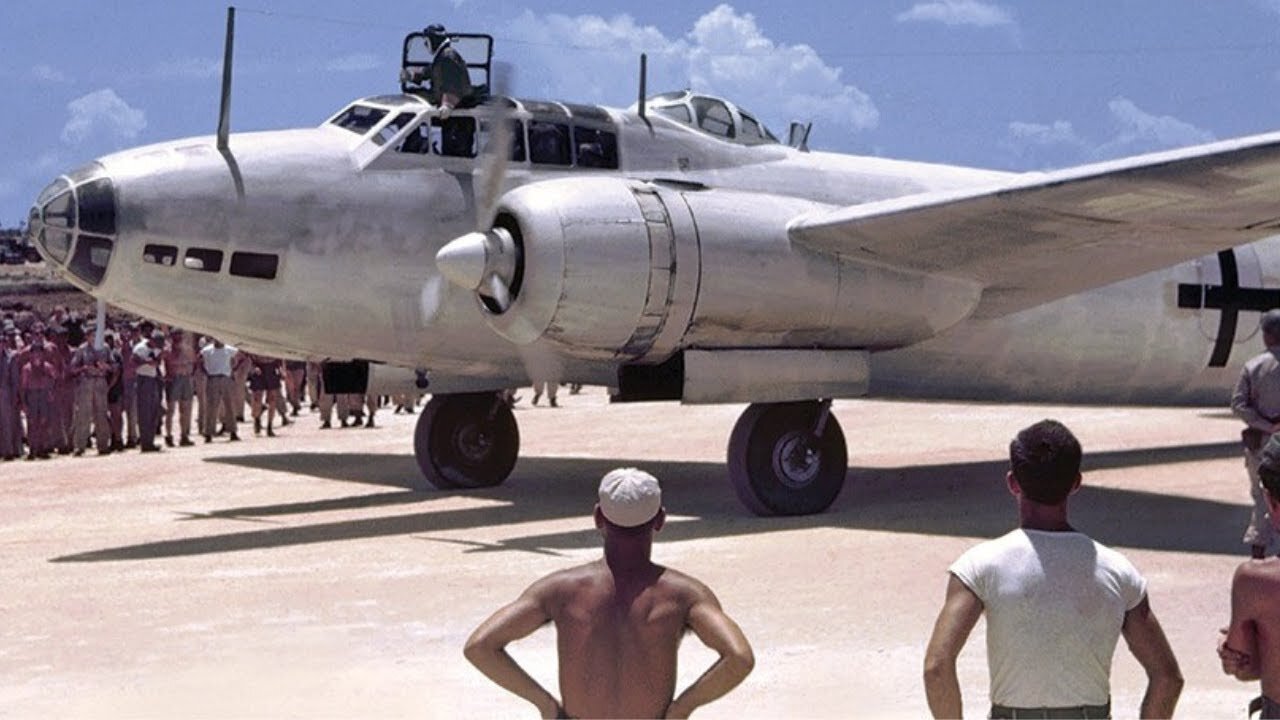Premium Only Content

US Pilots Examined A Captured Betty Bomber — Couldn't Understand Why It Had Unprotected Fuel Tanks
January 31, 1945. When American engineers examined a captured Mitsubishi G4M Betty bomber at Clark Air Base in the Philippines, they discovered something that would revolutionize their understanding of Japanese aviation doctrine. The fuel tanks were completely unprotected—no self-sealing compounds, no armor plating, no fire suppression systems. Just thin aluminum separating thousands of liters of high-octane fuel from enemy machine gun fire. This wasn't an oversight or design flaw. It was a deliberate choice by Japanese engineers who believed extraordinary range mattered more than crew survival. The Betty bomber could strike targets over 3,700 miles away, far exceeding any Allied bomber's capability in 1941. It sank the battleship HMS Prince of Wales and battlecruiser HMS Repulse in just 90 minutes, the first time capital ships were destroyed solely by air power while actively defending themselves. It devastated Clark Field on December 8, 1941, destroying American air power in the Philippines. But this remarkable performance came at a catastrophic price. At Guadalcanal on August 8, 1942, American fighters shot down 18 of 23 Betty bombers in a single mission, killing approximately 120 aviators. The aircraft earned grim nicknames like "Flying Lighter" and "One-Shot Zippo" because it exploded into flames from minimal combat damage. The unprotected fuel tanks that enabled the Betty's six-thousand-kilometer range also guaranteed that any hit would likely be fatal. This is the story of how Japanese designers sacrificed crew protection for performance, creating a bomber that was brilliantly designed to reach distant targets but catastrophically vulnerable once intercepted. From the sinking of British capital ships to the assassination of Admiral Yamamoto, from the Guadalcanal bloodbath to the disastrous Ohka kamikaze missions, discover why the Betty bomber became both Japan's most important land-based bomber and its most deadly—killing thousands of its own crews through design choices that prioritized capability over survival.
-
 1:06:09
1:06:09
Man in America
10 hours agoExposing HAARP's Diabolical Mind Control Tech w/ Leigh Dundas
46.6K18 -
 1:47:16
1:47:16
Tundra Tactical
6 hours agoGlock Interview From Beyond The Grave//Whats the Future of Home Training??
19.5K3 -
 LIVE
LIVE
BlackDiamondGunsandGear
4 hours agoEBT Apocalypse? / Snap Down SHTF / After Hours Armory
219 watching -
 14:05
14:05
Sideserf Cake Studio
15 hours ago $7.32 earnedHYPERREALISTIC HAND CAKE GLOW-UP (Old vs. New) 💅
32.2K4 -
 28:37
28:37
marcushouse
17 hours ago $2.64 earnedSpaceX Just Dropped the Biggest Starship Lander Update in Years! 🤯
11.5K5 -
 14:54
14:54
The Kevin Trudeau Show Limitless
3 days agoThe Hidden Force Running Your Life
81K14 -
 LIVE
LIVE
DLDAfterDark
4 hours agoIs The "SnapPocalypse" A Real Concern? Are You Prepared For SHTF? What Are Some Considerations?
222 watching -
 19:58
19:58
TampaAerialMedia
15 hours ago $0.32 earnedKEY LARGO - Florida Keys Part 1 - Snorkeling, Restaurants,
17.7K10 -
 1:23
1:23
Memology 101
2 days ago $0.83 earnedFar-left ghoul wants conservatives DEAD, warns Dems to get on board or THEY ARE NEXT
17K50 -
 3:27:27
3:27:27
SavageJayGatsby
6 hours ago🔥🌶️ Spicy Saturday – BITE Edition! 🌶️🔥
48.7K4